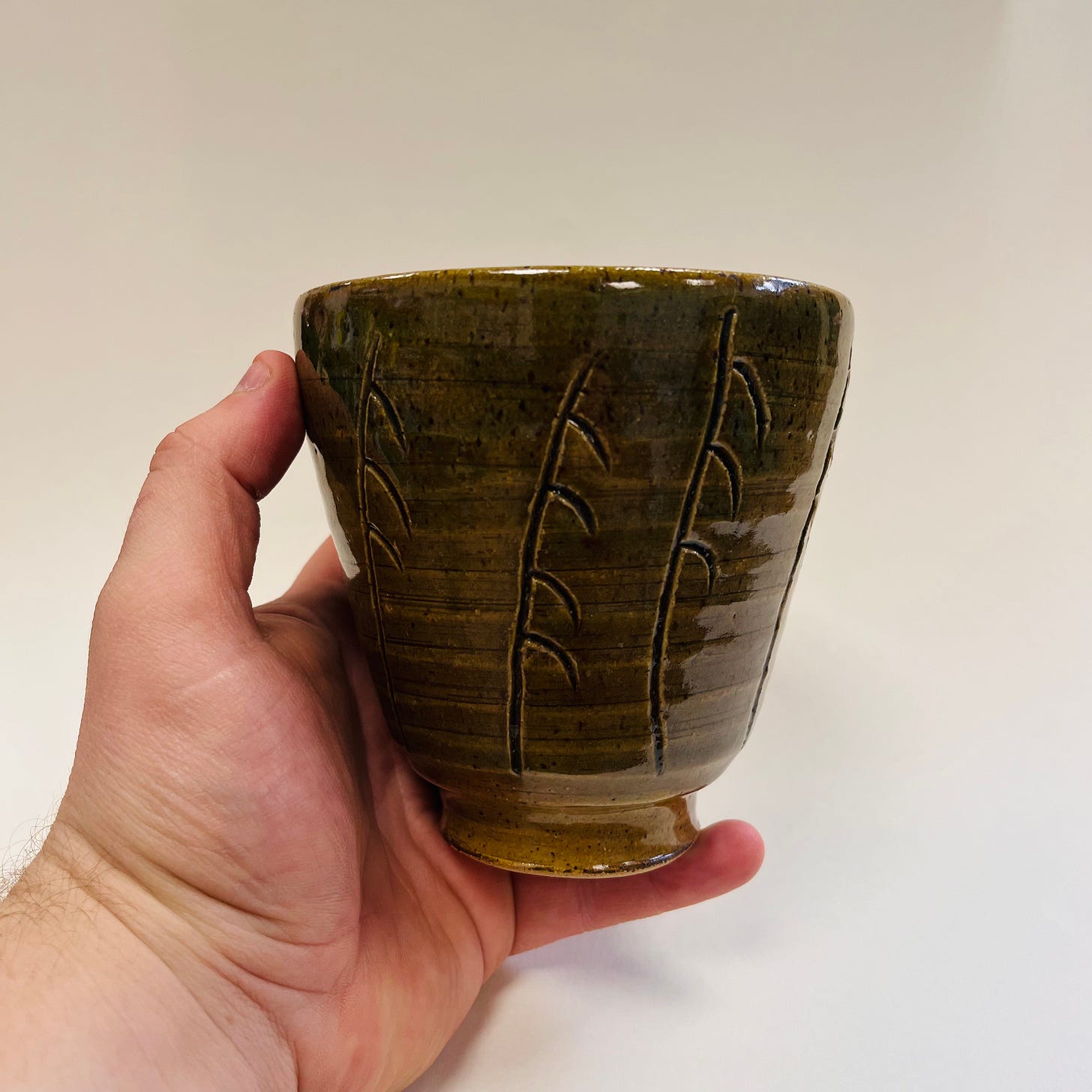When I first read W.B. Yeats poem, The Lake Isle of Innisfree I was struck by the line: “Nine bean-rows will I have there, and a hive for the honey-bee”. Around the same time I first read Yeats poem, I came upon Jack Troy’s assignment, A container for a poem. Troy says to “rescue a poem and give it a place of honor in a clay container”. Coincidentally Troy uses Yeats poem as an example. I decided to complete this assignment, making a container for the poem, The Lake Isle of Innisfree.
by William Butler Yeats
I will arise and go now, and go to Innisfree, And a small cabin build there, of clay and wattles made; Nine bean-rows will I have there, a hive for the honey-bee, And live alone in the bee-loud glade. And I shall have some peace there, for peace comes dropping slow, Dropping from the veils of the morning to where the cricket sings; There midnight’s all a glimmer, and noon a purple glow, And evening full of the linnet’s wings. I will arise and go now, for always night and day I hear lake water lapping with low sounds by the shore; While I stand on the roadway, or on the pavements grey, I hear it in the deep heart’s core.
As I considered the container I would make, I returned once more to the line, “Nine bean-rows will I have there, and a hive for a honey-bee”. This image would be the starting point for the vessel. In my sketches I continued to retun to a narrow bowl form, inspired by Yunomi. When I turned my page upside down, the form became reminiscent of a bee skep, becoming a representation of “a hive for the hone-bee”. Continuing my sketches I decided I wanted to visually represent nine bean-rows. This was done by carving nine abstracted bean-rows evenly spaced around the pot.
Considering color, I wanted a glaze that fit the form as well as the poem. The pot is easily passed over, the dull green celadon glaze is not striking at first glance. It requires one to pick it up and investigate the surface. The celadon pools in the carved bean-rows, leaving a rich dark green. Iron speckles in the clay show through the semi-transparent glaze, they melt and soften around the edges.
The tea bowl is quiet, unassuming. The poem finds its place of honor in the form, imagery, and color. And yet there is more to the poem. The poem starts in action. “I will arise and go now…” Yet, in the midst of this action, there is peace, “dropping slow”. How does this vessel contain the tension between action and peace? Trimmed lines spiral upwards, lifting the pot. The tea bowl itself rises, asking to be picked up with both hands; to be turned as fingers move across the smooth celadon and meet the carved grooves of the bean-rows.
As I hold this cup, drink from it, andstudy it with hand and eye, something about it speaks to me.
I hear it in the deep hearts core.





